Gang Mamak: Inside Malaysia’s Slick RM12 Million Gold Theft
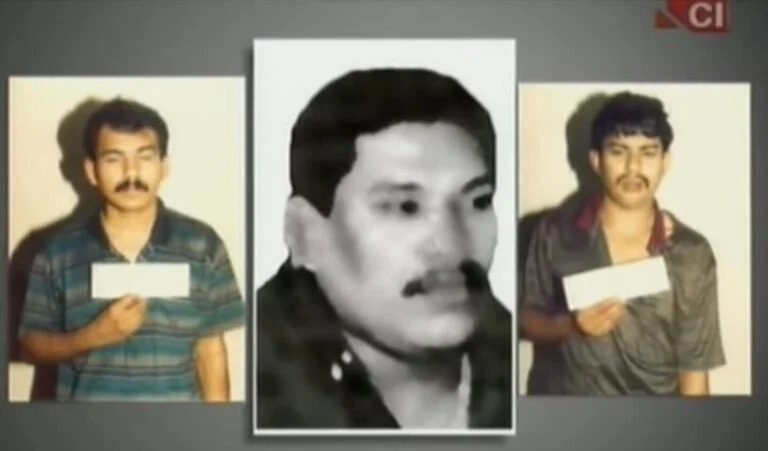 Thirsty for JUICE content? Quench your cravings on our Instagram, TikTok and WhatsApp
Thirsty for JUICE content? Quench your cravings on our Instagram, TikTok and WhatsApp
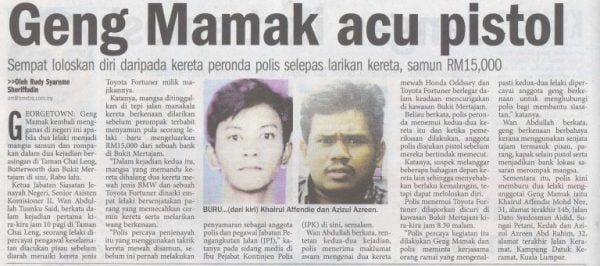
As a Malaysian, you may or may not have heard of the “Mamak Gang.” In case you haven’t, they’re not a group of men who hang out at mamak stalls all night sipping on teh tariks and debating football.
The Mamak Gang is actually a notorious Malaysian criminal group that’s been active since the early 1990s.
While the gang’s name may suggest that their criminal activity took place at mamak stalls or that it implies a racial connotation, indicating that the members were of “mamak” (Indian + Malay) descent, the reality is that the men were actually of varying races.
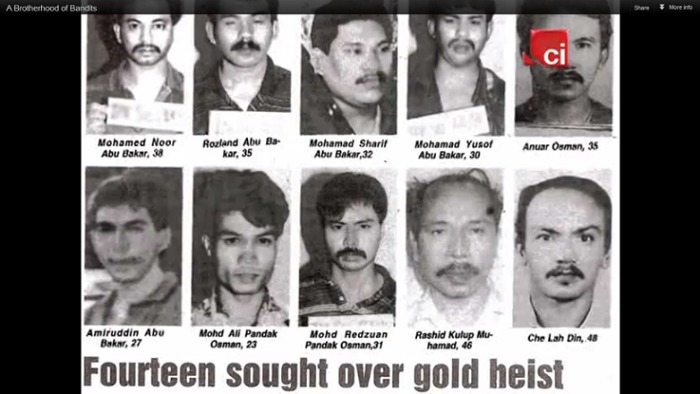
Initially, they specialised in breaking into factories and warehouses, but later shifted their focus to carjacking and robbing motorists.
The gang’s most infamous crime was the theft of RM12 million (approximately US$ 2.6 million) worth of gold bars from the Malaysia Airlines cargo complex at the former Subang Airport on Merdeka Day, 31 August 1994.
Here’s what happened:

Merdeka Day: A Perfect Cover for the Heist
As the clock struck midnight on Merdeka Day, signalling the start of festivities at the iconic Sultan Abdul Samad Building in Kuala Lumpur, Malaysians were absorbed in celebrating their independence.
The police were preoccupied with managing the celebrations when a shocking report surfaced: RM12 million worth of gold bars had vanished from the cargo area of Subang Airport, considered Malaysia’s most secure facility.
“In my entire career as a police officer, this has never happened before, because this cargo area is a high-security complex. To penetrate it, the perpetrators would have needed a flawless plan,” said Azizan Anan, police investigator, in an interview with CI.
Upon arrival, police discovered three airport guards bound and restrained. The guards claimed the culprits had impersonated policemen. Initially skeptical, investigators reviewed CCTV footage for confirmation.

Impersonation with Precision
The CCTV footage corroborated the guards’ account. Although the robbers wore police uniforms, their body language and behaviour were inconsistent with that of real officers.
Police investigator Amidon Anan stated that these men were not policemen, but well-organised robbers. The robbers had executed the heist in a mere 20 minutes, leveraging the holiday’s reduced staffing at the airport.
National Shock and a Furious Prime Minister

The audacity of the heist stunned the nation. Then-Prime Minister Dr. Mahathir expressed his outrage, questioning the airport’s security protocols.
“If gold bars can disappear from an airport, it’s not impossible for airplanes to go missing too,” remarked Dr. Mahathir.
Determined to capture the criminals, the Royal Malaysia Police (PDRM) established an undercover task force, led by the renowned brothers Azizan and Amidon Anan.
“If you have Azizan and Amidon as the task force, if you’re a criminal, you don’t even want to sleep, because you know they will hunt you down. They won’t sleep, they won’t eat, they will be trailing you with such intensity and passion until you are caught,” said Kamal Affandi, Malaysian criminal analyst, in an interview with CI.
Due to the sophistication of the criminal activities, law enforcement initially suspected involvement by international criminals. However, the Anan brothers redirected their focus from international suspects to local criminal organisations, uncovering a series of high-value robberies with strikingly similar modus operandi.
They eventually linked the heist to the Mamak Gang, known for similar methods of impersonating officials during robberies.
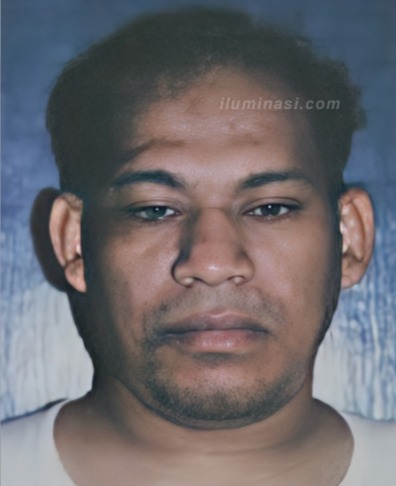
At the heart of the Mamak Gang’s operations were the Abu Bakar brothers – Mohamed Nor, Sharif, Rozlan, Amirudin, and Yusuf – a tightly-knit quintet with Sri Lankan and Malaysian heritage. Their criminal journey began with minor thefts during their teenage years, evolving into audacious high-stakes heists.
What distinguished them was their exceptional ability to impersonate police officers, a skill they employed with remarkable finesse to infiltrate their targets effortlessly.
Firearms were not their primary tool; persuasion was – a tactic that also helped mitigate potential legal repercussions. The brothers meticulously utilised their disguises to gain entry to secured locations, even setting aside funds for potential bail.
The roles of the Abu Bakar brothers within the gang were clearly defined: Sharif served as the strategic leader behind the gold heists, while Rozlan played a crucial role in orchestrating their impersonation endeavours, leveraging his expertise to plan daring operations.
Meanwhile, Yusuf executed tasks according to his brothers’ instructions and oversaw the manpower allocation, including their cousins.
The Mamak Gang, and subsequently the Abu Bakar brothers, operated as a family-run criminal enterprise, with Mohamed Nor serving as the gang’s leader.
Strategic Arrests and Interrogations
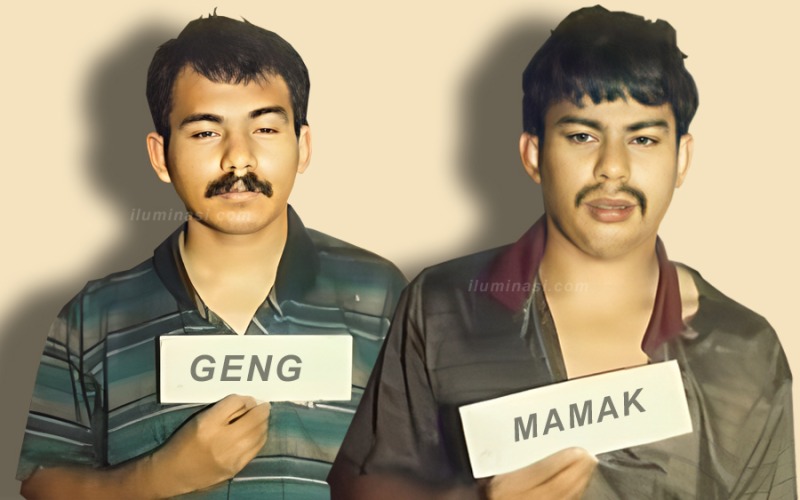
After months of investigation, a breakthrough came when Amidon chased a gang member in a high-speed pursuit, revealing the gang’s awareness of the police hunt.
The police finally apprehended Rozlan and Yusuf. Both were able to pay off their bail of RM100,000 each at the time.
Interrogations revealed that Sharif was the leader and that the gang led extravagant lifestyles, wearing flashy suits and driving luxurious cars. Their motivation extended beyond wealth; they sought legendary status, meticulously planning their heists to the smallest detail.
While many gang members were arrested, the gold had already been melted down and sold, with only a small portion recovered.
In the 1995 trial, the disappearance of Che De Lah, a key witness ready to testify against his gang members, was a significant setback for the case.
As a result, the Abu Bakar brothers were released.
Persistent Criminal Activities

In 2004, Mohamed Nor bin Abu Bakar, the leader of the notorious Mamak Gang and the country’s most wanted criminal at the time, was arrested in Puchong Perdana after three years on the run.

More arrests followed, but despite key members being repeatedly apprehended and sentenced to either preventive detention or exile to remote areas, the gang continued to manage their “criminal empire” from detention using mobile phones and couriers to relay instructions.
New generations of the gang emerged, employing the same tactic of impersonating police officers.
The last significant activity recorded was in May 2018 when two members were gunned down by federal police in Rembau.
Both men were believed to be remnants of the notorious Mamak Gang. Their two accomplices managed to escape into nearby bushes off Jalan Chengkau-Pilin during the 12:30 a.m. incident.
The deceased men, aged 33 and 35, were linked to a series of armed robberies and each had three criminal records for drug-related offences, said Negeri Sembilan police chief, DCP Datuk Noor Azam Jamaludin.
The discovery of a semi-automatic Norinco .357 pistol loaded with five bullets, two machetes, an axe, a cap bearing the Royal Malaysia Police (RMP) logo, a vest bearing the RMP logo, and a Royal Malaysian Customs badge in a grey Honda Accord nearby indicated the deceased were remnants of the now-defunct gang.
He noted that the Serious Crimes Division (D9) of Bukit Aman’s CID was engaged in the shootout with the two criminals who were armed with a revolver and machete.
“They were suspected of being involved in armed robberies targeting victims leaving banks after transactions. This gang has been active since 2015,” he said at a press conference. State CID chief ACP Wan Rukman Wan Hassan was also present.
Before this incident, the Bukit Aman police team had spotted four men in the car on Jalan Seremban-Tampin. When police attempted to stop the car, the vehicle sped off, leading to a four-kilometre chase.
“We intercepted the car, causing the driver to lose control, and it skidded and crashed into a signboard. One of the suspects opened fire, resulting in a shootout with the police. Two other suspects managed to escape into the bushes,” he added.
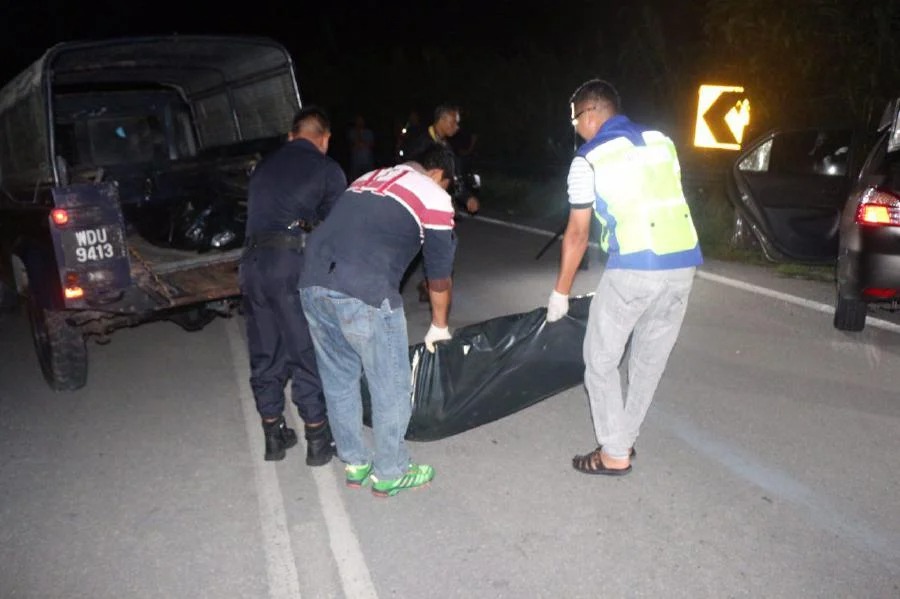
On 4 April 2017, at approximately 9:30 p.m. in Tanah Hitam, Chemor, two individuals on the police’s most-wanted list attempted to evade a police inspection.
Perak acting police chief Datuk Hasnan Hassan reported that, acting on a tip-off, a team from the Serious Crimes Division (D9) of the Perak and Penang police headquarters had identified the two men inside a grey Toyota Vios in Tanjung Rambutan.
“When the team ordered the men to stop their vehicle for inspection, they sped off.
“In their haste to escape, the suspects’ car skidded and crashed at Tanah Hitam. Instead of surrendering, one of the men exited the vehicle and fired several shots at the police, while the other brandished a parang at an officer. Further inspection of the car revealed a .38 revolver, two live bullets, four magazines, four machetes, and a police vest.
Hasnan stated that further checks identified the duo, known as “Misai” and “Ganesh,” as members of the notorious Mamak Gang.
The men were also on the police’s wanted list for 28 cases across Perak, Penang, Kedah, Selangor, Negeri Sembilan, and Malacca, involving crimes such as burglaries, robberies, and car thefts.
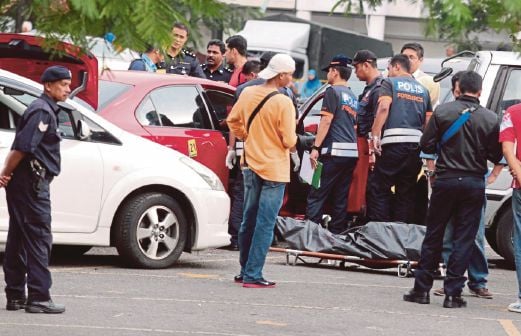
Prior to that, in 2014, a man believed to be a member of the notorious Mamak Gang was killed, and his accomplice was wounded in a shootout with police in Taman Melawati.
The 59-year-old man had been high on the police wanted list for a string of armed robberies, and his accomplice was also believed to be a gang member.
The drama unfolded in the afternoon when police tried to stop the duo, who were in a red Volkswagen Jetta with fake registration plates, at a night market site in Lorong Sarawak.
D9 officers had been monitoring the two for several days and moved in the day before to arrest them. The driver of the vehicle attempted to ram a police car in a bid to escape, but the duo found themselves blocked by two other police vehicles.
One of the suspects opened fire, prompting the police to return fire, instantly killing the wanted man. His 32-year-old accomplice was wounded in the waist and was sent to Ampang Hospital. Selangor Criminal Investigation Department chief Datuk Mohd Adnan Abdullah stated that both men had criminal records. The deceased, from Gerik, Perak, was believed to be behind 24 armed robberies and break-ins in the Klang Valley.
“The man is believed to be a hardcore criminal and one of the longest-serving members of the gang. We found seven parang, an axe, 16 fake car number plates, a police vest, a ski mask, and gloves.”
A Smith & Wesson revolver, believed to have been used in the shootout, was also recovered from the vehicle.
Police continue to search for current members who are believed to be remnants of the gang, responsible for more than 150 robberies in the 1990s.
No one was ever convicted of Malaysia’s largest gold heist.
Our hearts go out to the individuals affected by the gang’s crimes. We wish all victims justice and closure.


 Get Audio+
Get Audio+ Hot FM
Hot FM Kool 101
Kool 101 Eight FM
Eight FM Fly FM
Fly FM Molek FM
Molek FM

